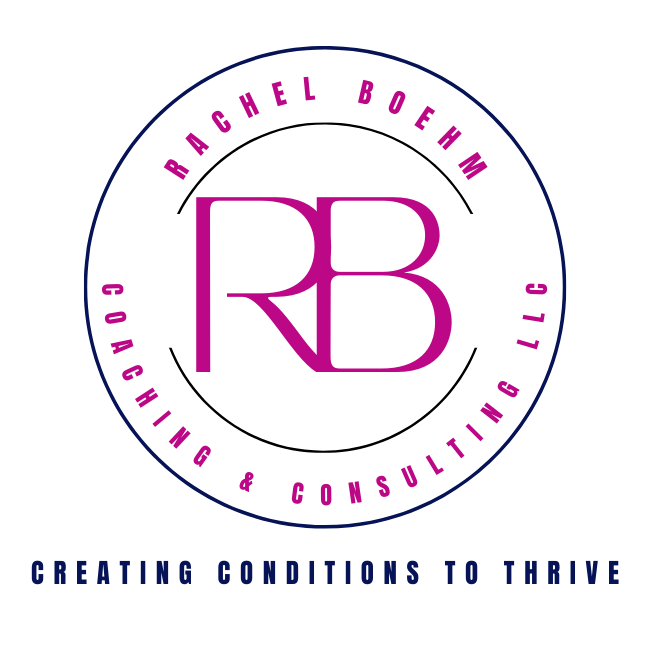The Slow Extinguish: How Top Performers Can Be Blindsided by Burnout
Let's be real – you're a high-achiever who's got it all together. You're killing it at work, juggling a million responsibilities, and still managing to show up for your friends and family (most of the time). The idea of burnout? Psh, that's not you. You’re an optimizer. You subscribe to personal/professional development blogs and books and webinars and…
And that’s exactly why you could be blindsided by burnout.
Let's be real – you're a high-achiever who's got it all together. You're killing it at work, juggling a million responsibilities, and still managing to show up for your friends and family (most of the time). The idea of burnout? Psh, that's not you. You’re an optimizer. You subscribe to personal/professional development blogs and books and webinars and…
…And that’s exactly why you could be blindsided by burnout.
Burnout can happen to anyone, even the most accomplished and put-together professionals. And here's the kicker – you could be well on your way to burning out without even realizing it.
Burnout doesn't happen overnight. It's a slow extinguish, a gradual erosion of your physical, emotional, and mental resources that leaves you feeling drained, cynical, questioning your abilities, and just going through the motions.
That’s bad but the worst is that it’s very hard to see those early warning signs in ourselves. Others see it first. You might notice in friends before you notice it in a “friend”. Given the mental, physical, emotional, and financial toll burnout can take, and how it can affect your relationships, you might want to consider burnout prevention as part of your personal and professional development plan.
Early Warning Signs Peak Performers Miss
So what are some of the earliest warning signs? They will differ for people, which is another reason early burnout can be hard to detect. But here are some common shifts:
• Starting to lose joy in your work or business
• Loving your business/work so much that you work it “nights and weekends” literally or figuratively speaking
• Shifts in food cravings or eating patterns (type of food, amount of food, times of day)
• Pulling back from hobbies for work
• Pulling back from personal commitments and relationships for work
• Neglecting self-care activities (not just candles and bubble baths but skipping showers or doctor’s appointments or working in your PJs regularly)
• Shorting your sleep
• Starting to regularly say, “When things calm down, I’ll…” or “I just gotta get through this…” or “Good, just busy…”
• Starting to feel low on energy (“drained”)
• More frequent headaches, colds, or the flu
• Saying “yes” to more and more and more (even if you want to)
If any of those sound familiar, you might be starting on the burnout path. Burnout typically moves through 12 stages. I’ve started likening it to falling through Dante’s Inferno. And hitting even the mid stages is not a club you want to be part of, trust me. I’ve hit near bottom.
So What Is Burnout, Really?
Most think burnout is feeling overwhelmed or stressed. It’s more than that but that’s how it can start. Burnout is when you feel exhausted, and cynical, and start questioning your ability to be effective in your work. When you experience all three at the same time for an extended period, you are burnt out. Until then, you’re on the path to burning out, you are slowly extinguishing.
Burnout is the result of chronic stressors that have gone unmanaged (duh right or they wouldn’t be chronic). These stressors typically involve 6 areas of misalignment in an organization. If you’re a solopreneur, though, it may be hard to see that. So think about it these areas in your work and your personal life.
Without getting too in the weeds, suffice to say: if your work or work situation or personal life is putting more demands on you than you can healthfully cope with, you are going to start burning out.
The earlier you recognize the signs that you are, the better your chances of preventing that full-blown, bottom of the inferno, extinguish. When that happens, medical attention might be necessary, addictions might have started, depression or anxiety might have kicked in, and often people are leaving their jobs/businesses or even the entire industry. Burnout can also negatively impact your relationships, productivity, and overall quality of life. Burnout can make you feel like you're just going through the motions, detached from the things and people that once brought you joy and fulfillment.
It’s a Continuum, Not a Switch
That's why it's crucial to understand the difference between being burned out and burning out.
Being burned out is a state of complete depletion. Burning out is the progression towards that state.
Here's the good news burnout is preventable. You can take proactive steps to set boundaries and rework your daily routines so that you become burnout-proof.
Start by identifying and addressing the risk factors that contribute to your burnout, such as unrealistic workloads, lack of autonomy, or poor work-life balance.
Prioritize self-care practices like exercise, mindfulness, nutrition, leisure, relationships, distraction management, and setting boundaries to protect your time and energy.
Remember, you're not alone in this journey.
Seeking support from a credentialed coach or therapist can provide valuable perspective, action plans, and accountability.
And don't forget to celebrate small wins along the way – burnout prevention is a marathon, not a sprint. At the end of the day, your well-being should be a top priority. It’s the only thing you can’t outsource.
If you want to continue being the high-achiever that you pride yourself on being, that starts with knowing the subtle early signs of burnout and acknowledging that burnout is a continuum not an on/off switch. Doing so will help you live in alignment with your core values, discover your sense of purpose, set big goals with realistic steps, and find greater personal and professional fulfillment.


